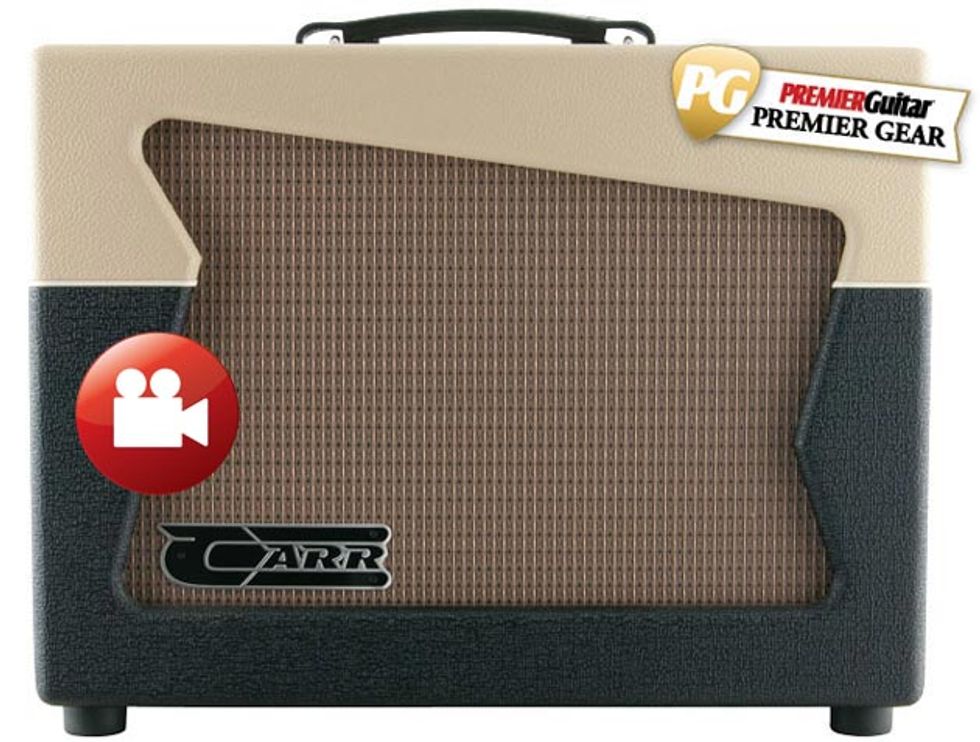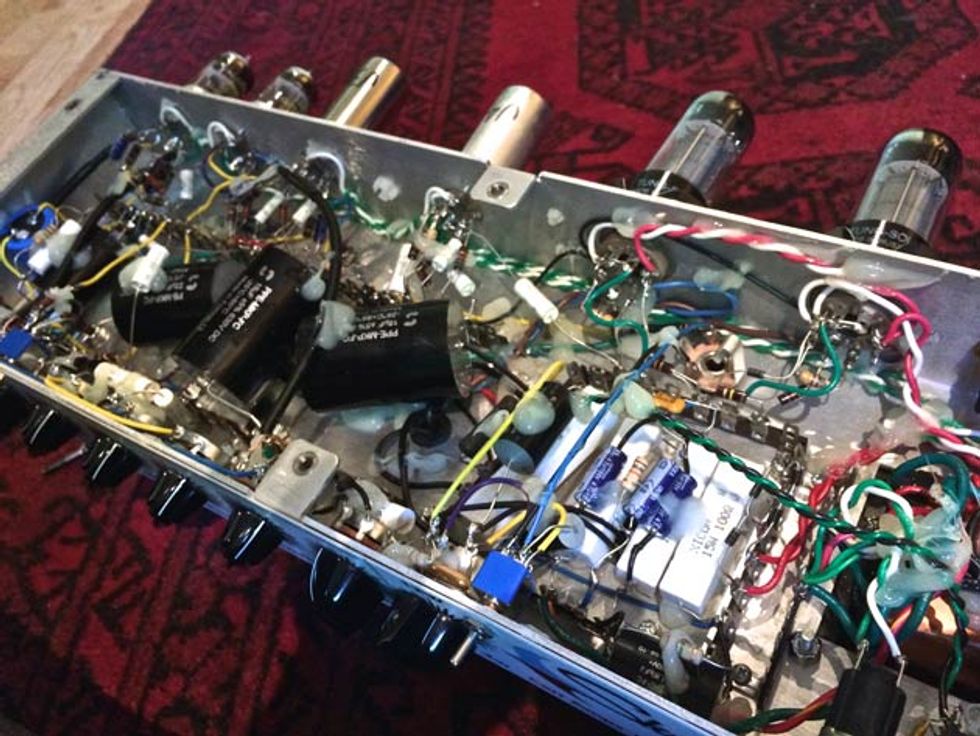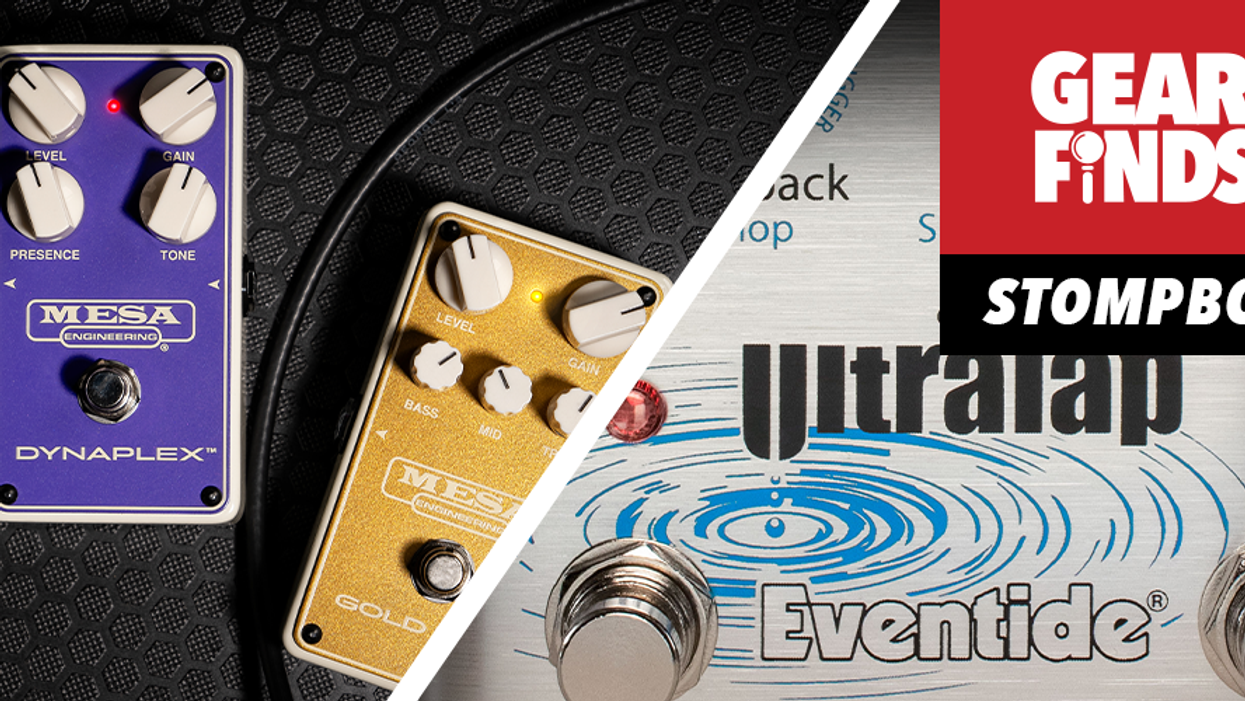
Whether you’re the sort who bristles at the very notion of a small combo amp that costs north of two grand, or someone who, like me, considers that a fair fee for superior craftsmanship, we can agree on one thing: At that price, the amp better be damn good!
Skylark, a new 12-watt, 1x12 combo from North Carolina builder Steve Carr, is more than damn good. It’s at least double-damn good. Perhaps even triple.
Far from Fullerton
The Skylark circuit descends from Fender’s Harvard, a humble 2x6V6 student model that earned immortality as the amp Steve Cropper used on classic Stax tracks. Skylark captures Harvard’s finest qualities—richly chiming tones, superb dynamic response, and gratifying overdrive at modest volume—yet the apple has rolled a bit from the Fender tree.
A 12" Celestion A-type “American voiced” speaker replaces the original 10" cone. There are other cool upgrades and innovations, though the dual-6V6 architecture is faithful to the original. (There are also two 12AX7s and two 12AT7s for the preamp and reverb. Sorry, no tremolo.)
Skylark’s gorgeous solid-pine cabinet goes full 20th-century moderne. The two-tone vinyl covering and spiffy leather handle look classy and cool. But the most striking detail is a speaker cutout whose asymmetric contour evokes swimming pools and coffee tables of the 1950s. Construction is stout: The EHX preamp tubes and Tung-Sol power tubes sit snug in their sockets, guarded by a steel cage that’s easily removed for speedy servicing. The speaker wires are hardcore audiophile. Even the power cable, with its transparent hardware, looks bitchin’.
This is true point-to-point wiring, using no board whatsoever—just terminal strip.
The insides are just as striking, but in a different way. Opinions vary as to whether amps assembled on turret board are truly “point-to-point.” But this is definitely the real deal, with no board at all. Parts are soldered directly to each other, to pots and tube sockets, or to bits of terminal strip. Components “float” in space, secured by wire, solder, and glue-gun blobs that suggest a Martha Stewart project gone horribly wrong. At a glance, it may seem sloppy and chaotic, but once you start poking around, you realize how reliably everything is secured.
Parts are modern, with a mix of carbon-comp and metal-film resistors and many standard-sized caps. However, the big power supply caps are formidable-looking Solens, reportedly used in aerospace. The transformers are custom made for Carr.
Spectacular Sounds
Skylark is a case study in what’s great about dual-6V6 circuits. It transitions smoothly from clean to crunch at relatively low volume. Even cranked, it retains focus—there’s no tweed-style splat at maximum settings. Note fundamentals are clear and decisive. Attack remains crisp. Yeah, Skylark can’t do squeaky-clean at high volume like an amp with bigger bottles, but its lightly overdriven tones are so articulate that you may find your clean-toned parts sounding great with more-than-usual gain.
Ratings
Pros:
Extraordinary sound, response, workmanship, and versatility. Saber-toothed tones at pussycat levels.
Cons:
Pricey.
Tones:
Ease of Use:
Build/Design:
Value:
Street:
$2,390
Carr Skylark
carramps.com
The tone controls—bass, mid, treble, and presence—suggest vintage Fender, but they’re more flexible. The mid control has an unusually wide range, enough to dial in a wealth of overdriven tones. Bass and treble are surgical and subtle. The presence knob introduces explosive crackle that somehow never gets abrasive. Skylark sings no matter where you set the knobs.
But ironically, you barely need to touch the controls to generate multiple tones. To prove the point, I set all knobs to noon, parked my lazy ass in a chair across the room, and recorded clip 1 (above). It was easy to coax everything from slashing distortion to pristine cleans and thick jazz chords using only touch and the knobs on my Hamer 20th Anniversary (a Paul-style guitar with retro PAFs). Few amps are so exquisitely responsive.
In the Tank
The amp’s MOD reverb tank sounds as thick and dreamy as the best outboard Fender spring units. (Skylark can definitely surf.) There’s also a gain switch providing vintage-like response in its low setting and more gain on high. Thankfully, it’s not one of those overstated “lead channels,” all flaccid compression and barf-bag mids. It’s the same great sound, just nudged hotter (and with the reverb return dialed back for better definition on distorted riffs and solos).
The cabinet disperses sound widely and evenly. At 12 watts, Skylark is surprisingly loud—probably perfect for small gigs with a restrained drummer, or for any venue with good sound reinforcement. (I’d totally use it on a big-stage tour.) Yet Skylark isn’t one of those low-wattage amps that are still too frickin’ loud to crank at home. With the built-in attenuator engaged, you can dial the power between 1.2 and 0 watts, and even the quietest settings sound shockingly good. I recorded clip 2 (above) at literal whisper volume. It came out brighter than intended, minus treble-cutting power amp distortion. No problem dialing it darker—though that icepick edge might be perfect in a thick mix.
The Verdict
Guilty—of greatness. Skylark sounds as beguiling as any vintage Fender I’ve adored. Meanwhile, its deviations from Fenderdom (re-voiced tone stack, high-gain mode, attenuator) are cool and meaningful refinements. The build is a beaut. The tones are ravishing. While there may be some players up to the task, most of us would be hard-pressed to pry a crappy sound from this superb instrument.
Watch the Review Demo:









![Rig Rundown: Russian Circles’ Mike Sullivan [2025]](https://www.premierguitar.com/media-library/youtube.jpg?id=62303631&width=1245&height=700&quality=70&coordinates=0%2C0%2C0%2C0)

















